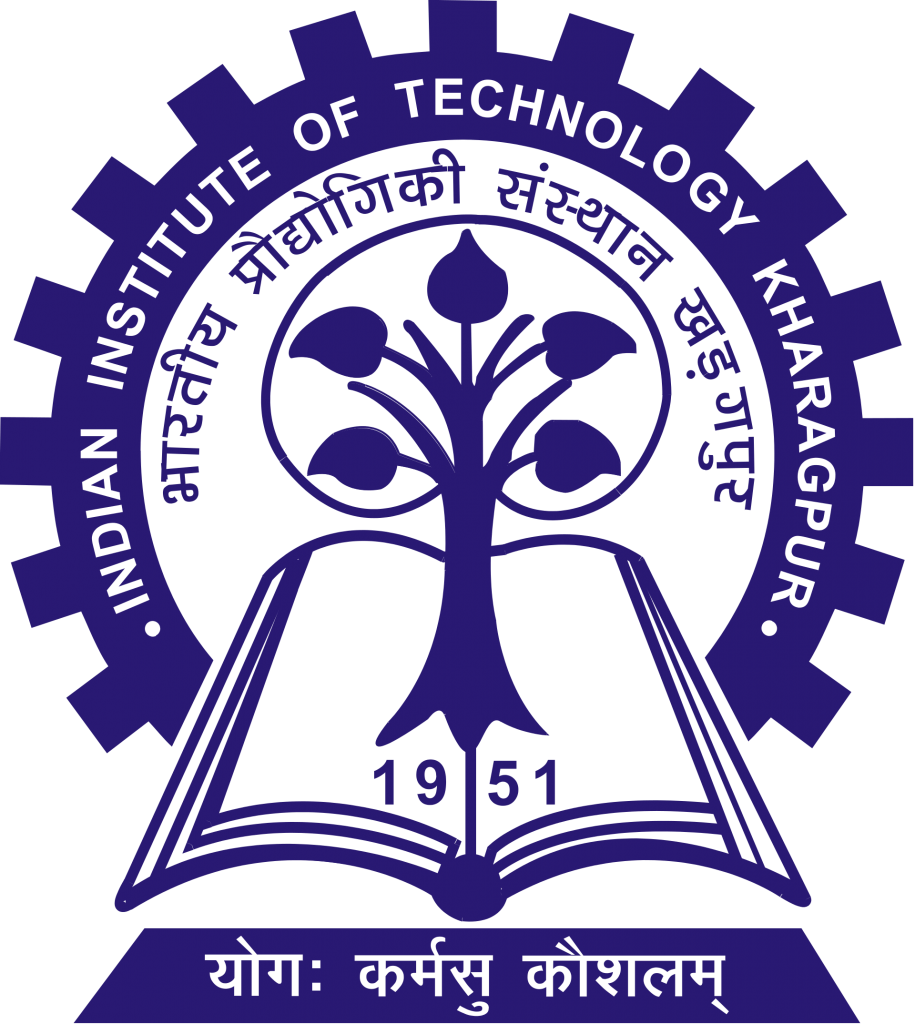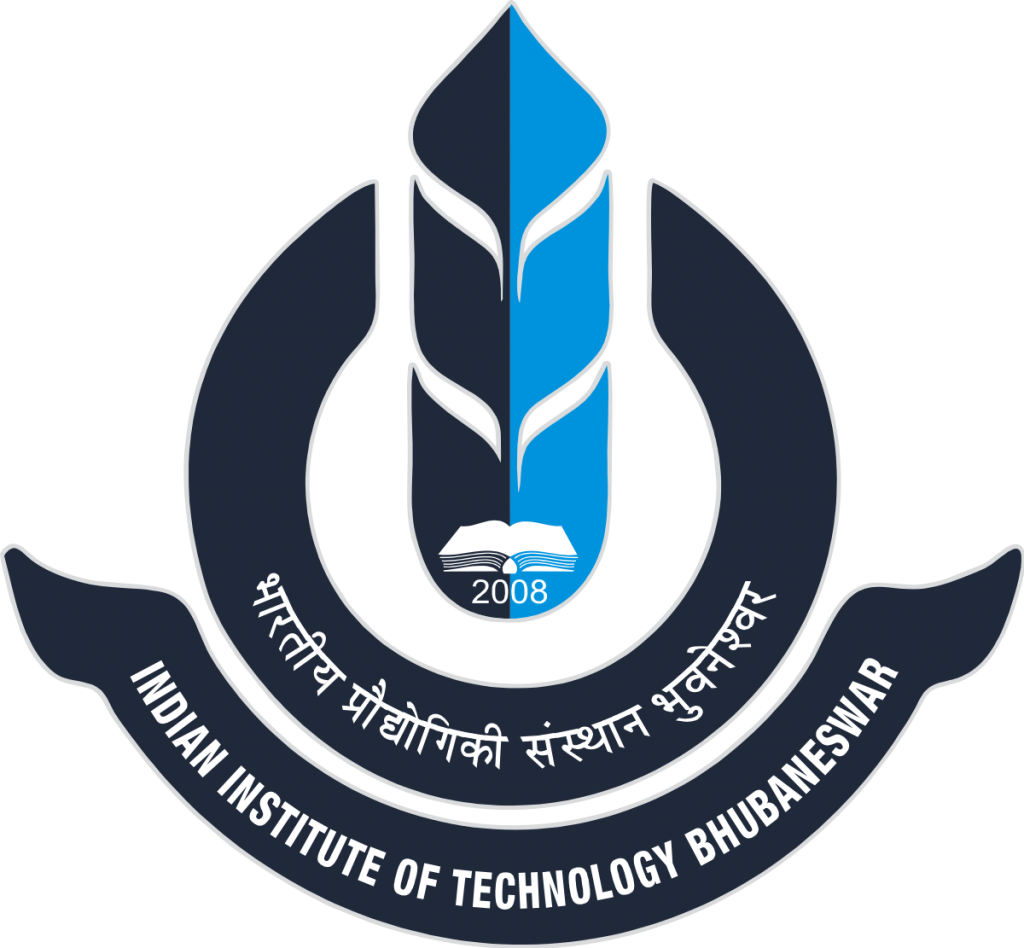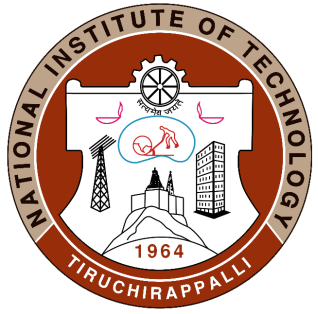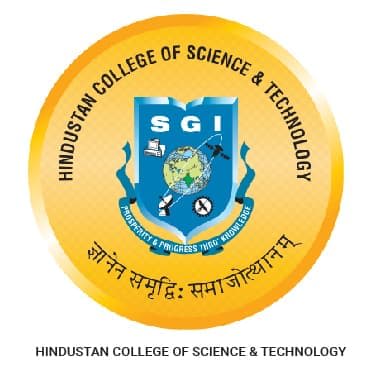Collaborations & Partnerships
Our approach
Bhaktivedanta Institute’s Summer and Winter Schools are structured around the idea to emphasize more on a subject matter and present and share vivid views on the same. The summer schools are filled with not only thought provoking classes but also interactive workshops and personality development activities.
These schools share the same objectives as AISSQ (note: hyperlink to AISSQ tab) does. But to reiterate, the school’s main objective is to enthuse the young minds of India to delve into the subject of science keeping along the element of spirituality.
COLLABORATED INSTITUTIONS
Various Institutes works with hand-in-hand
IIT
Kharagpur
Indian Institute of Technology Kharagpur (IIT Kharagpur) is a public technical and research university established by the government of India in Kharagpur, West Bengal, India. Established in 1951, the institute is the first of the IITs to be established and is recognized as an Institute of National Importance. In 2019 it was awarded the status of Institute of Eminence by the government of India.
These schools share the same objectives as AISSQ (note: hyperlink to AISSQ tab) does. But to reiterate, the school’s main objective is to enthuse the young minds of India to delve into the subject of science keeping along the element of spirituality.The institute was initially established to train scientists and engineers after India attained independence in 1947. However, over the years, the institute’s academic capabilities diversified with offerings in management, law, architecture, humanities, etc. IIT Kharagpur has an 8.7-square-kilometre (2,100-acre) campus and has about 22,000 residents.
IIT
Bhubaneswar
Indian Institute of Technology Bhubaneswar (IIT Bhubaneswar) is a public technical and research university established by the government of India in 2008, located at Bhubaneswar, Odisha, India. It is one of the eight new Indian Institutes of Technology (IITs) established by the Ministry of Human Resource Development, Government of India under The Institutes of Technology (Amendment) Act, 2011 which establishes the eight new IITs as well as declares IT-BHU as Indian Institute of Technology. The Act was passed in the Lok Sabha on 24 March 2011 and by the Rajya Sabha on 30 April 2012. It started functioning from the campus of IIT Kharagpur on 23 July 2008 and shifted its operation to the city of Bhubaneswar on 22 July 2009.
The institute admits students into BTech, MTech and PhD programs. It started operating from current campus at Arugul from academic session 2015–16. The new and permanent campus was inaugurated by Narendra Modi on 24 December 2018. Admissions are done as per the All India Rank of JEE Advanced. The academic session begins in July each year. Currently, Prof. R.V. Rajakumar is the director of the institute.
NIT
Tiruchirappalli
National Institute of Technology Tiruchirappalli (NIT Trichy or NITT) is a national research university near the city of Tiruchirappalli in Tamil Nadu, India. It was founded as Regional Engineering College Tiruchirappalli in 1964 by the Governments of India and Tamil Nadu under the affiliation of the University of Madras. The college was granted Deemed University status in 2003 with the approval of the University Grants Commission, All India Council for Technical Education and Government of India and renamed as National Institute of Technology Tiruchirappalli. The university was declared as an Institute of National Importance in 2007 by the Government of India under the National Institutes of Technology, Science Education and Research Act and is one of the members of the National Institutes of Technology (NITs) system, a group of premier Indian technical universities governed by the Council of NITSER.
NIT Trichy focuses exclusively on engineering, management, science, technology and architecture. The university offers 10 bachelor’s, 40 master’s and 17 doctoral programmes through its 17 academic departments and awards more than 1700 degrees annually. The National Institutional Ranking Framework (NIRF) has ranked the university 1st among the NITs for five years in a row from 2016 to 2020. The NIRF has also ranked the university 8th for architecture, 9th for engineering, 35th for management and 24th overall in India in 2020. The Federation of Indian Chambers of Commerce and Industry named the university the University of the Year in 2017.
NISER
Bhubaneswar
National Institute of Science Education and Research (NISER) is an autonomous premier public research institute in Jatani (Khordha), Odisha, India under the umbrella of Department of Atomic Energy, Govt. of India. The institute is a constituent institution of Homi Bhabha National Institute (HBNI). The prime minister, Manmohan Singh (2004–2014), laid the foundation stone on August 28, 2006, establishing the institute along the lines of the IISc in Bangalore, and its seven sister institutions, the IISERs, established at Pune, Mohali, Kolkata, Bhopal, Berhampur, Tirupati and Thiruvananthapuram in India.
Unlike the IISERs, which will be governed by the Ministry of Human Resources Development, Government of India, NISER operates under the umbrella of the Department of Atomic Energy (DAE). The government of India earmarked an initial outlay of ₹823.19 crore (US$120 million) during the first seven years of the project, starting in September 2007. It was ranked 2nd in the country by the Nature Index 2020(compiled by Nature Research). It is a Constituent Institution of Homi Bhabha National Institute so the ranking of Homi Bhabha National Institute is considered the ranking for all of its constituent institutions.
Simplex Infrastructures Pvt. Ltd.
Simplex Infrastructures Ltd. is a diversified company established in 1924 and executing projects in several sectors like Transport, Energy & Power, Mining, Buildings, Marine, Real Estate etc.
Simplex is one of the construction leaders in India for nearly 90 years executing projects with consistent quality assurance, cost control and adherence to milestones in a safe environment as per the customer requirements. It promotes the culture of sharing rich and varied experience with staff members, as also with clients and thereby benefits and helps the growth of the construction fraternity and society at large.
The Company has been closely associated with the country’s infrastructure building with over 2600 completed projects spanning almost all the gamut of construction industry.
Bharatiya Vidya Bhavan
Bharatiya Vidya Bhavan, an internationally reputed institution dedicated to the promotion of education and culture, is a charitable public trust founded by Dr. K. M. Munshi on november 7, 1938.
The founding members of the Bhavan include Dr. Rajendra Prasad, the first President of the Republic of India, Shri C. Rajagopalachari, the first indian and last Governor General of India; Pandit Jawaharlal Nehru, the first Prime Minister of free India; Sardar Patel , Deputy Prime Minister and Home Minister, several distinguished scholars, statesmen and leaders of modern Indian renaissance.
From a small beginning, the Bhavan has grown into a great intellectual, cultural and educational movement all over India. The Government of India recognized the Institution as “An Institution of National Eminence” and awarded the Gandhi Peace Prize in the year 2002. Bharatiya Vidya Bhavan has spread its wings abroad (in United Kingdom, United States of America, Canada, Portugal, South Africa, Kuwait, Mexico, Singapore and Australia) and besides has a number of affiliated colleges and constituent institutions.
The foundation stone of Bhavan’s Kolkata Kendra was laid by former President Neelam Sanjiva Reddy in 1984. Bhavan’s Gangabux Kanoria Vidyamandir – the kolkata Kendra Bharatiya Vidya bhavan was inaugurated on 18th June, 1984 with the blessings of Swami Lokeswaranandaji Maharaj of Ramkrishna Mission. The school started with a few staff members and 150 students, starting from class I to V. With the overwhelming response of the guardians, within a span of 6 months, more sections had to be added. The first batch of students appeared for the CBSE examinations in 1988. At present the student strength of the school is more than 3600. Today the name of the school shines like a beacon and has achieved laurels almost in every field. Bhavan’s Kolkata has since upheld the tradition under the guidance of Bharatiya Vidya Bhavan and strives towards perfection and believes in development for a better tomorrow. As emphasized by Swami Vivekananda “Out of the past is born the present, out of the present is born the future”.
Hindustan College of Science and Technology
Hindustan College of Science & Technology (HCST-0064) is situated at the 26 km milestone from Agra on the Agra-Delhi Highway (NH-2). It is housed in a grand complex with 1,00,000 sq.mts of covered area built on a plot of 29.4 acres with beautifully maintained greenery.
This college is amongst the first self-financed colleges in North India, affiliated to Dr. APJ Abdul Kalam Technical University (AKTU), Lucknow and approved by All India Council for Technical Education (AICTE), New Delhi.
Hindustan College of Science & Technology offers Bachelor’s Degree in various branches of Engineering and Master Degree in Management & Engineering. Most of the programs are accredited by the National Board of Accreditation (NBA).
Earning a college degree is all about opening up opportunities in life. It prepares you, both intellectually and socially, for your career and your adult life. The benefits of a college education include better career opportunities like improved paying and higher-skilled jobs, respect in society. It requires a lot of hard work, but that work prepares you for a challenging and rewarding career and more fruitful life.
Sharda University
Sharda University is a leading Educational institution based out of Greater Noida, Delhi NCR. A venture of the renowned Sharda Group of Institutions (SGI), The University has established itself as a high quality education provider with prime focus on holistic learning and imbibing competitive abilities in students.
The University is approved by UGC and prides itself in being the only multi-discipline campus in the NCR, spread over 63 acres and equipped with world class facilities.
Sharda University promises to become one of the India’s leading universities with an acknowledged reputation for excellence in research and teaching. With its outstanding faculty, world class teaching standards, and innovative academic programmes, Sharda intends to set a new benchmark in the Indian education system.
The name of University, ‘Sharda’ is synonymous to ‘Goddess of knowledge and learning – Saraswati’. She is identified with ‘veena’ an Indian musical instrument and the ‘lotus’ where she resides. The lotus in our logo symbolizes the seat of learning that the University is created for. Variety of colours signify the variety of disciplines the university offers and the overlap between petals creating new colours demonstrate the ethos of collaboration between students and teachers of different programme, nationality, creed and colour working towards creating new knowledge.
The petals leading towards a star is an embodiment of the University’s cherished mission to provide education beyond boundaries and to facilitate the students and faculty to achieve pinnacles of success throughout the world!
Delhi Technological University
Delhi Technological University (DTU), formerly known as the Delhi College of Engineering (DCE) is a state university in New Delhi, India. It was established in 1941 as Delhi Polytechnic. In 1952, it started giving degrees after being affiliated with the University of Delhi. The institute has been under the Government of Delhi since 1963 and was affiliated with the University of Delhi from 1952 to 2009. In 2009, the college was given university status, thus changing its name to Delhi Technological University.
Kalyani University
Kalyani University, established in 1960, is a state-government administered, affiliating and research university in Kalyani , West Bengal, India. It offers courses at the undergraduate and post-graduate levels.
This university is providing academic guidance and leadership to 48 affiliated colleges (20 in Nadia, 27 in Murshidabad and 1 in North 24 Parganas). Colleges are independent from the university but they follow the course curriculum of the university. Colleges are headed by the principal and teachers of the colleges are appointed via West Bengal college service commission. Colleges have responsibility for admitting undergraduates and organising their classes.
In 2016 University of Kalyani has been awarded A grade (CGPA 3.12) by the National Assessment and Accreditation Council (NAAC). Hepatitis C nosode was developed by Rajesh Shah with a group of Molecular Biologists at the University of Kalyani, where it was demonstrated that the nosode sourced from Hepatitis C virus could produce anti-cancer effect on cell lines in a laboratory model. This was one big achievement by the biologists in the field.
MNNIT Allahabad
Motilal Nehru National Institute of Technology Allahabad (MNNIT or NIT Allahabad), formerly Motilal Nehru Regional Engineering College (MNREC), is a public technical university located in Allahabad (Prayagraj), Uttar Pradesh, India. It is one among the top NITs in the country, and like the rest of them, classified as an Institute of National Importance. The college has the distinction of being the first in the country to start an undergraduate programme in Computer Science & Engineering, in 1976-77.
Utkal University
Utkal University is the oldest university in Odisha and the 17th-oldest university in India located in Bhubaneswar, Khordha, Odisha. It is a teaching-cum-affiliating university. The present campus at Vani Vihar located on a sprawling 399.9 acre area in the heart of Bhubaneswar. This is the largest affiliating university in the country having 381 affiliated general colleges including 16 autonomous colleges,100 professional colleges,9 law colleges and 7 colleges.
The university has now the jurisdiction over 9 districts, viz, Angul, Cuttack, Dhenkanal, Jajpur, Jagatsinghpur, Kendrapara, Khurda, Nayagarh and Puri and is spread over an area of 24,973 sq. kilometers catering to the needs of higher education of a population of more than 120 lakhs.
At present the university has twenty-seven Post-Graduate teaching and research departments located within the campus, viz. Directorate of Distance and Continuing Education, University Law College at Vani Vihar. Besides the regular courses, twenty-six sponsored courses are offered under the direct academic control of the P.G. Council of the university. The university is located in the middle of the city. It is 5 km from the airport, 3 km from the railway station. Sainik school is to its north. Mancheswar industrial area is to its east.
In 2016, Utkal University adopted its theme song from “tunga sikhar chula” (1st 3 stanzas) poem of Godabarish Mishra, one of its founder members.
Osmania University
Osmania University, established in 1918, is the seventh oldest in India, the third oldest in south India and the first to be established in the erstwhile princely state of Hyderabad. Through out its existence of over eight decades, it has shown remarkable progress and sustained an integrated deve- lopment of all faculties. It has significantly contributed to the academic and economic development of not only the region but also of the Country. Its alumni have distinguished themselves nationally and internationally in various spheres of life and are spread far and wide around the world.
The University has a vision of developing, enhancing, and improving the quality of human resources to meet the challenges of regional, national and global socio-economic changes. It’s mission is to achieve excellence in teaching and research and to create opportunities for the students to contribute to the national and regional development.
Osmania University is re-accredited by the National Assessment and Accreditation Council (an Autonomous Institution of the University Grants Commission) as ‘A+’ Grade University.
Tirumala Tirupati Devasthanams
Tirumala Tirupati Devasthanams (TTD) is an independent trust which manages the temples including the Tirumala Venkateswara Temple in Andhra Pradesh. The trust oversees the operations and finances of the second richest and the most visited religious center in the world. It is also involved in various social, religious, literary and educational activities. TTD is headquartered at Tirupati and employs about 16,000 people.
IIT (BHU) Varanasi
Indian Institute of Technology (BHU) Varanasi (IIT BHU) is a public technical and research university located in Varanasi, Uttar Pradesh, India. Founded in 1919 as the Banaras Engineering College, it became the Institute of Technology, Banaras Hindu University in 1968. It was designated an Indian Institute of Technology in 2012. IIT (BHU) Varanasi has 16 departments, 3 inter-disciplinary schools and 1 Humanities & Social Sciences Section. It is located inside the Banaras Hindu University Campus, however is not dependent on it.
Asiatic Society
The Asiatic Society is an organisation founded during the Company rule in India to enhance and further the cause of “Oriental research”, in this case, research into India and the surrounding regions. It was founded by the philologist William Jones on 15 January 1784 in a meeting presided over by Justice Robert Chambers in Calcutta, the then capital of the British Raj.
At the time of its foundation, this Society was named as “Asiatick Society”. In 1825, the society was renamed as “The Asiatic Society”. In 1832 the name was changed to “The Asiatic Society of Bengal” and again in 1936 it was renamed as “The Royal Asiatic Society of Bengal”. Finally, on 1 July 1951, the name of the society was changed to its present one. The Society is housed in a building at Park Street in Kolkata (Calcutta). The Society moved into this building during 1808. In 1823, the Medical and Physical Society of Calcutta was formed and all the meetings of this society were held in the Asiatic Society.
















